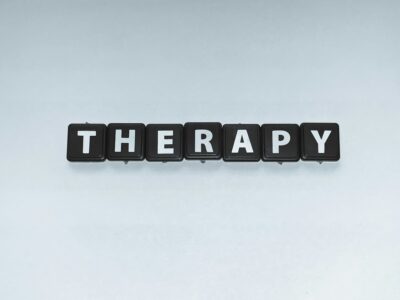In our fast-paced world, feeling overwhelmed, anxious, or stressed can happen at any moment. Whether you’re facing a challenging situation at work, dealing with personal conflict, or simply feeling the weight of daily pressures, knowing how to calm yourself fast is an essential life skill that can transform your mental well-being and overall quality of life. The ability to quickly regain composure and find inner peace isn’t just beneficial for your immediate comfort—it’s crucial for making better decisions, maintaining healthy relationships, and protecting your long-term physical and mental health.
When stress hormones flood your system, your body enters a state of heightened alertness that can make rational thinking difficult. Learning effective techniques to rapidly shift from this activated state to a calmer one empowers you to navigate life’s challenges with greater resilience and clarity. The good news is that there are numerous evidence-based strategies you can implement immediately, regardless of where you are or what resources you have available.
Understanding Your Body’s Stress Response
Before diving into specific calming techniques, it’s important to understand what happens in your body when stress strikes. When you encounter a stressful situation, your sympathetic nervous system activates the “fight or flight” response, releasing hormones like cortisol and adrenaline. This physiological reaction increases your heart rate, elevates blood pressure, and heightens your senses—all designed to help you respond to perceived threats.
While this response can be helpful in genuinely dangerous situations, it often becomes activated during everyday stressors that don’t require such an intense physical reaction. Modern triggers like traffic jams, work deadlines, or social conflicts can leave your nervous system in a state of chronic activation, leading to feelings of anxiety, irritability, and exhaustion.
The key to learning how to calm yourself fast lies in activating your parasympathetic nervous system—the body’s natural “rest and digest” mode. This system counterbalances the stress response by slowing your heart rate, lowering blood pressure, and promoting feelings of relaxation and well-being. By consciously engaging techniques that stimulate this calming response, you can quickly shift your physiological state and regain emotional equilibrium.
Breathing Techniques for Immediate Relief
One of the most powerful and accessible ways to calm yourself fast is through controlled breathing exercises. Your breath is directly connected to your autonomic nervous system, making it an immediate gateway to relaxation. Unlike other bodily functions that operate automatically, breathing can be consciously controlled, giving you direct influence over your stress response.
The 4-7-8 Breathing Method
The 4-7-8 breathing technique, popularized by Dr. Andrew Weil, is particularly effective for rapid stress relief. To practice this method, exhale completely through your mouth, then close your mouth and inhale quietly through your nose for a count of four. Hold your breath for a count of seven, then exhale completely through your mouth for a count of eight, making a whooshing sound. This pattern helps regulate your nervous system by extending the exhale, which signals your body to relax.
Box Breathing for Mental Clarity
Box breathing, also known as square breathing, is another highly effective technique used by Navy SEALs and other high-performance professionals. This method involves inhaling for four counts, holding for four counts, exhaling for four counts, and holding empty for four counts. The equal timing creates a rhythmic pattern that helps focus your mind while simultaneously calming your nervous system, making it an excellent tool when you need to regain composure quickly.
Quick Physical Techniques to Calm Yourself Fast
When stress or anxiety strikes, your body responds immediately with physical symptoms like rapid heartbeat, shallow breathing, and muscle tension. Learning how to calm yourself fast begins with addressing these physical responses through proven techniques that work within minutes.
The 4-7-8 Breathing Method
One of the most effective ways to calm yourself fast is through controlled breathing. The 4-7-8 technique involves inhaling for 4 counts, holding your breath for 7 counts, and exhaling for 8 counts. This pattern activates your parasympathetic nervous system, naturally slowing your heart rate and reducing cortisol levels. Practice this technique three to four times whenever you feel overwhelmed, and you’ll notice an immediate shift in your stress response.
Progressive Muscle Relaxation
Physical tension often accompanies emotional stress, creating a cycle that’s difficult to break. Progressive muscle relaxation helps you identify and release this tension systematically. Start by clenching your fists tightly for five seconds, then release and notice the contrast. Move through each muscle group—shoulders, face, legs—tensing and releasing. This technique not only helps you understand how to calm yourself fast but also builds awareness of where you carry stress in your body.
Mental Strategies for Immediate Relief
While physical techniques address the body’s stress response, mental strategies help redirect anxious thoughts and restore emotional balance. These cognitive approaches can be particularly effective when combined with breathing exercises.
The 5-4-3-2-1 Grounding Technique
When anxiety threatens to overwhelm you, grounding techniques anchor you to the present moment. The 5-4-3-2-1 method involves identifying five things you can see, four things you can touch, three things you can hear, two things you can smell, and one thing you can taste. This sensory exercise interrupts anxious thought patterns and demonstrates how to calm yourself fast by shifting focus from internal worries to external reality.
Positive Self-Talk and Affirmations
The internal dialogue you maintain during stressful moments significantly impacts your ability to recover quickly. Instead of catastrophic thinking, replace negative thoughts with calming affirmations like “This feeling will pass” or “I have the tools to handle this situation.” Research shows that positive self-talk can reduce stress hormones and improve emotional regulation within minutes.
Environmental and Lifestyle Approaches
Your surroundings and daily habits play crucial roles in stress management. Creating an environment that supports rapid calming can make these techniques even more effective.
Creating a Calming Space
Designate a specific area in your home or workplace as your calm zone. This might include soft lighting, comfortable seating, or calming scents like lavender. Having a predetermined space where you practice these techniques reinforces their effectiveness and makes it easier to know how to calm yourself fast when needed.
For those seeking additional support in managing stress and anxiety, digital tools can provide valuable assistance. Try Aitherapy now. to explore personalized coping strategies and guided exercises that complement these quick-relief techniques.
Quick Environmental Adjustments
Sometimes the fastest way to calm yourself involves changing your immediate environment. Step outside for fresh air, dim harsh lighting, or play soft background music. These simple environmental modifications can support your calming efforts and create the optimal conditions for stress relief techniques to work effectively.
Building Long-Term Resilience
While learning how to calm yourself fast provides immediate relief, developing consistent practices strengthens your overall stress response. Regular implementation of these techniques creates neural pathways that make calming responses more automatic during challenging situations.
Daily Practice for Maximum Effectiveness
The most effective approach involves practicing these techniques when you’re already calm, not just during stressful moments. Spend five minutes each morning doing the 4-7-8 breathing exercise or progressive muscle relaxation. This daily investment builds muscle memory, making it easier to access these skills when you truly need to know how to calm yourself fast during high-pressure situations.
Combining Techniques for Enhanced Results
Different situations may call for different approaches. Combine breathing exercises with grounding techniques, or pair positive self-talk with environmental adjustments. Experiment to discover which combinations work best for your specific stress triggers and lifestyle demands.
When to Seek Additional Support
These quick-calming techniques are powerful tools for managing everyday stress and anxiety. However, persistent or severe anxiety may require professional support. If you find yourself needing to use these techniques multiple times daily or if stress significantly impacts your daily functioning, consider consulting with a mental health professional.
For those interested in exploring additional resources and personalized guidance, Try Aitherapy now. This platform offers tailored coping strategies and guided exercises that can complement the techniques discussed here, providing ongoing support for your mental wellness journey.
Final Thoughts
Mastering how to calm yourself fast is an invaluable life skill that empowers you to navigate stress with confidence and clarity. These evidence-based techniques—from breathing exercises to environmental modifications—provide immediate relief while building long-term resilience. Remember that consistency and practice are key to developing these skills effectively.
Start by choosing one or two techniques that resonate with you, then gradually expand your toolkit as you become more comfortable. With regular practice, you’ll find that knowing how to calm yourself fast becomes second nature, allowing you to maintain emotional balance even in challenging circumstances. Your mental wellness journey is unique, and these tools provide a solid foundation for managing stress and anxiety throughout your daily life.
References
American Psychological Association. (2019). Stress effects on the body. Retrieved from https://www.apa.org/topics/stress/body
Harvard Health Publishing. (2020). Relaxation techniques: Breath control helps quell errant stress response. Retrieved from https://www.health.harvard.edu/mind-and-mood/relaxation-techniques-breath-control-helps-quell-errant-stress-response
Mayo Clinic. (2021). Stress management: Know your triggers. Retrieved from https://www.mayoclinic.org/healthy-lifestyle/stress-management/in-depth/stress-management/art-20044151
National Institute of Mental Health. (2022). Anxiety disorders. Retrieved from https://www.nimh.nih.gov/health/topics/anxiety-disorders
![$input.first().json.photos[2].photographer_url](https://images.unsplash.com/photo-1564029476-c16c3f973e82?crop=entropy&cs=tinysrgb&fit=max&fm=jpg&ixid=M3w4MDk5MjJ8MHwxfHNlYXJjaHwxfHxyZWxheGF0aW9uJTJDJTIwZGVlcCUyMGJyZWF0aGluZ3xlbnwwfHx8fDE3NjA2OTQxODd8MA&ixlib=rb-4.1.0&q=80&w=1080)


